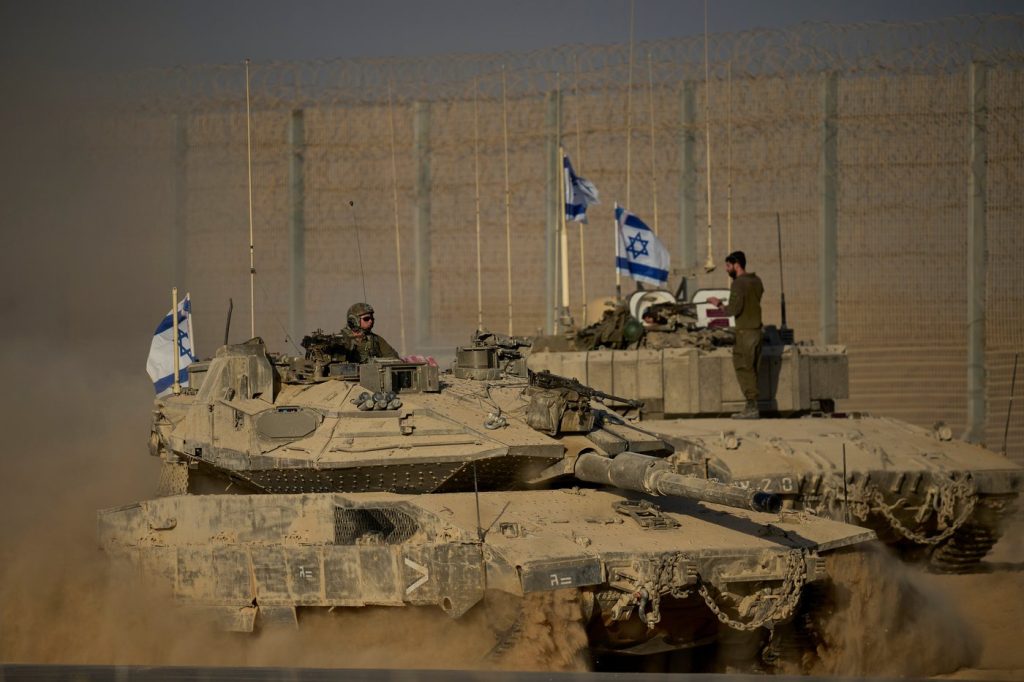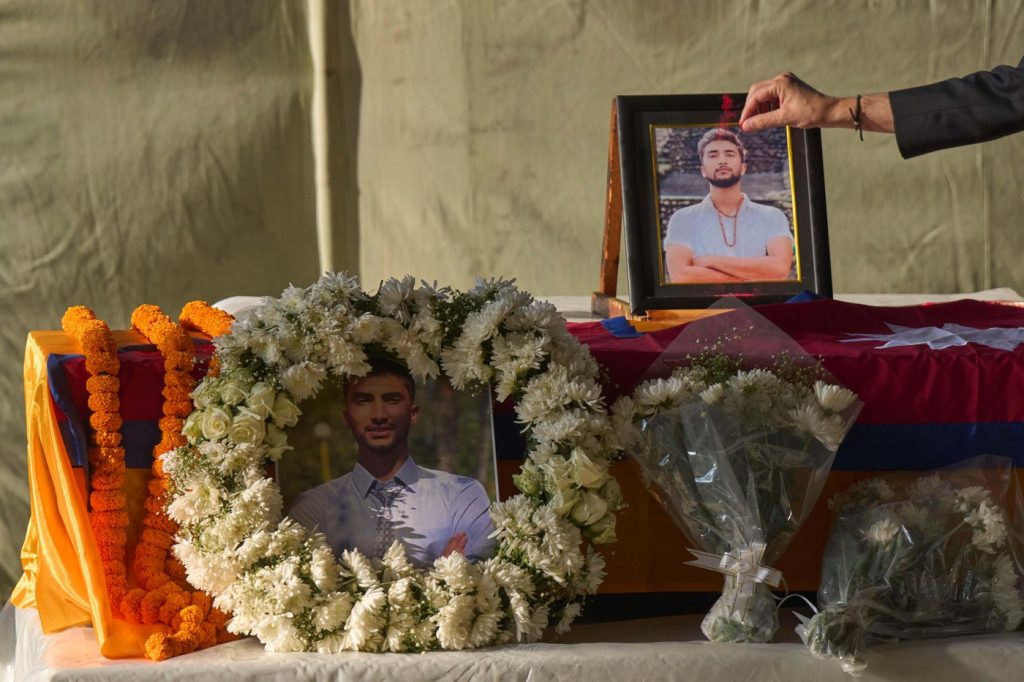TEL AVIV, Israel (AP) — On Monday, two envoys from U.S. President Donald Trump arrived in Israel to support the ongoing ceasefire in Gaza, following an outbreak of violence that put the fragile agreement to its first significant test since its implementation. The ceasefire came into effect on October 10, aimed at halting two years of war.
The situation appeared to stabilize as Israel received additional remains of hostages previously abducted in Gaza, and humanitarian aid shipments to the region began anew. However, UN spokesperson Stephane Dujarric did not specify the amount of aid entering the territory. Previously, Israel had threatened to suspend humanitarian assistance after accusing Hamas militants of killing two Israeli soldiers, leading to airstrikes that killed dozens of Palestinians. Following this, Israel announced it would enforce the ceasefire again.
U.S. special envoy Steve Witkoff and Jared Kushner, Trump’s son-in-law, met with Israeli Prime Minister Benjamin Netanyahu to discuss developments in the region. U.S. Vice President JD Vance and Second Lady Usha Vance are scheduled to visit on Tuesday to meet Netanyahu. During a speech, Netanyahu reiterated that any attacks on Israeli forces by Hamas would lead to significant repercussions.
Trump expressed cautious optimism regarding the ceasefire, suggesting that the U.S. would allow the situation a "little chance" to stabilize, warning Hamas that they must comply with the terms or face serious consequences. He emphasized that the group must "be good," or else they would be "eradicated."
As the ceasefire has stretched over a week, renewed violence has erupted, particularly as Israeli military operations resulted in the deaths of numerous Palestinians. Reports from Gaza's Health Ministry indicated that airstrikes had killed around 45 people since the ceasefire began, contributing to a total of 80 deaths within that timeframe. Hamas accused Israel of multiple ceasefire violations, claiming communication with its forces in Rafah had been severed for months and distancing the group from recent violent incidents.
The Israeli military announced steps taken to clarify the "yellow line," the demarcation area from which their troops have pulled back. Incidents of violence occurred when militants approached this zone, prompting Israeli strikes that killed several individuals whom the military deemed an "imminent threat." Meanwhile, preparations for the next phase of the ceasefire are underway, which includes discussions on disarming Hamas, potential further Israeli withdrawals from Gaza, and the establishment of an internationally supported governing authority over the territory.
Hamas leader Khalil al-Hayya is currently in Cairo engaging with mediators on fulfilling the ceasefire agreement. Despite the ongoing discussions, concerns loom over the stability of the agreement, with many Palestinians in Gaza expressing fears that the ceasefire may collapse amidst continued violence. Funeral services were held for those killed by recent Israeli airstrikes, reflecting on the ongoing humanitarian crisis and the dire situation within the territory.
A critical point remains how extensively Israel will permit aid to flow into Gaza. Mediators are working on ensuring the Rafah border crossing from Egypt is opened to facilitate this humanitarian effort. Qatar's Minister of State for International Cooperation, Mariam bint Ali Al-Misnad, highlighted the importance of the crossing in delivering essential aid to the beleaguered region.
The hostilities marked by Hamas on October 7, 2023, initially triggered the conflict, resulting in the deaths of approximately 1,200 individuals, predominantly civilians, and the abduction of 251 hostages. The ongoing conflict has inflicted heavy casualties, with Gaza's Health Ministry reporting over 68,000 Palestinian deaths, although Jerusalem disputes these figures. Thousands of others remain unaccounted for, leaving the humanitarian situation in Gaza critical as negotiations for peace continue.












